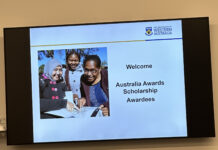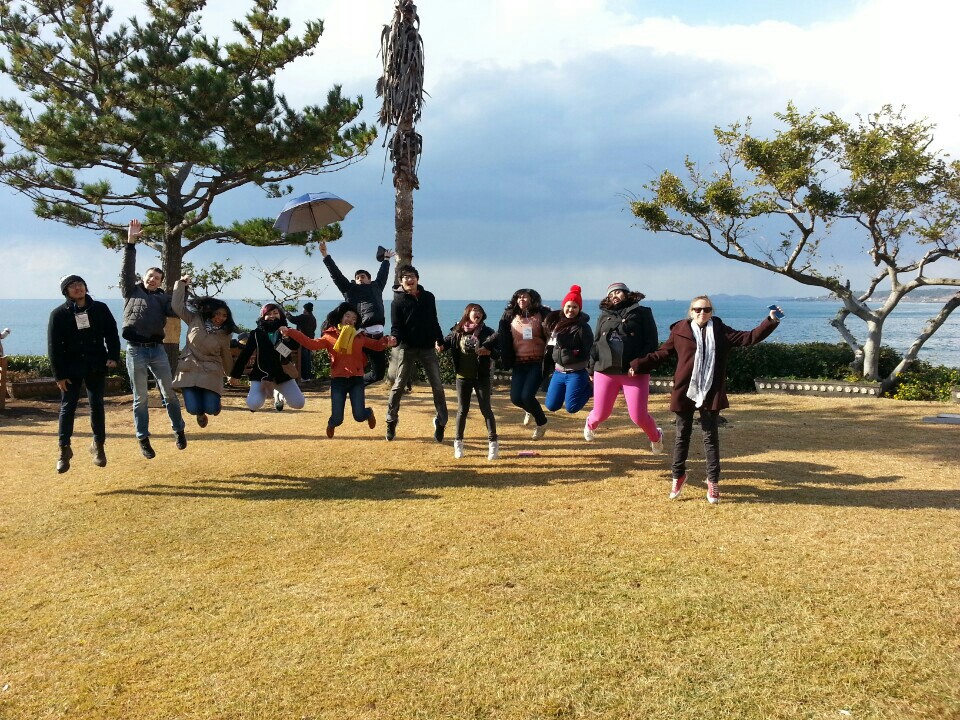As I am writing this article, I am taking a train to Busan to enjoy my first vacation during my Language Training Program in Chungnam National University, Daejeon, South Korea. I am now in my fifth month experiencing life as a student in the land of kimchi as a grantee of the Korean Government Scholarship Program (KGSP) for graduate students. It is a very challenging and interesting experience to have a chance to study in a country that is currently gaining fame around the world through its KPOP and advanced technologies. In this article, I would like to give you a glimpse of the Korean Government Scholarship for graduate students. This scholarship is funded by the South Korean government and regulated by the National Institute of International Education (NIIED). This year, KGSP for graduate students are open for 880 international students from 164 nationalities including Indonesia (www.studyinkorea.go.kr). Other than KGSP for graduate students, there are other kinds of scholarship programs including KGSP for undergraduate students as well as for exchange students. However, in this article, I would like to specifically explain about KGSP for graduate students (Master’s and PhD Degrees).

First of all, like other graduate scholarships, KGSP also provides its grantees opportunities to pursue their Master’s or Doctoral degrees in their dream universities with their preferred majors. However, KGSP is different in that the program provides an opportunity for its grantees to study Korean through its language program for one year. This program is aimed for the grantees not only to be familiar with the Korean language but also to support their life and study in South Korea. Therefore, the length of the program is different from that of other Master’s or PhD scholarships as it also includes the one year language program in it. KGSP gives its grantees chances to study in two different universities. The first one is the designated university for the Korean language training and the second one is the preferred university for the Master’s or PhD program. In my case, I am currently taking Korean language course in Chungnam National University, Daejeon and I will pursue my Master’s degree in International Development Studies in Hankuk University of Foreign Studies (HUFS), Seoul. The institution for language training is decided by NIIED after the final announcement of the scholarship.
Grantees need to spend 3 years in total for Master’s Degree (2 years Master’s Degree and 1 year Korean language training) and 4 years for PhD (3 years PhD and 1 year Korean language training). In my case I will spend 3 years in total for my Master’s Degree and Korean language training. Korean language training is a very essential part of the scholarship and it is a requirement for grantees to gain permission to study in their graduate schools. At the end of my Korean language course, I have to pass a standardized test in Korean language called the Test of Proficiency in Korean (TOPIK) level 3. This regulation applies to all participants of KGSP both for Master’s and PhD students. Under certain circumstances, some grantees might be excluded from taking the Korean Language Training if they already have TOPIK level 5 or 6. In addition to the language course, this one year program also allows the awardees to experience a lot of Korean cultures, activities, as well as field trips to many places in South Korea such as Jeju Island and Kyongju. This is a very rewarding experience that not many scholarship students may have in other scholarship programs.
Upon obtaining TOPIK level 3 or above, KGSP grantees are allowed to proceed into their graduate schools. I myself will be studying in Hankuk University of Foreign Studies in the Graduate School of International Area Studies (GSIAS) majoring in International Development Studies. Some universities offer their courses fully in Korean while some others in English or mixed between Korean and English. In my case, I will be taking graduate courses fully in English. All grantees are free to choose their desired universities and majors based on some rules set by NIIED. For example in 2013, there were 52 universities both public and private offering their seats under the scheme of this scholarship program. The universities that take part in KGSP maybe different from time to time. Thus, it is highly recommended for applicants to follow the basic guideline given by NIIED every year.
The application to KGSP Graduate Program is open around February every year. There are two ways to apply to this program. Applicants are able to apply via designated Korean universities or via the Korean Embassy in their countries. Further, I will also explain the differences between the application to designated Korean universities and to a Korean Embassy. When applying for KGSP, applicants should be aware of the quota of the scholarship. Both designated universities and the Korean Embassy, in this case the Korean Embassy in Indonesia, have their own quota. The quota may be different every year and applicants may find further information about this quota in www.studyinkorea.go.kr.

Like many other scholarship programs, KGSP also requires applicants to prepare essays such as self-introduction, brief description about study plan of your major, and plan after the completion of the program. In addition to those essays, applicants also need to prepare a detailed list of their GPA every semester, TOEFL/IELTS (if available), TOPIK (if available), published papers (if available), and award certificates (if available). Those are the main documents for application both via designated Korean universities and via a Korean Embassy.
The two types of KGSP application differ in terms of the institution that takes care of the selection as well as some of the steps in the application process. Basically applicants have to undergo three rounds of selection: submission of documents to the Korean university or Embassy, interview by the university or Embassy followed by announcement of the second round result, and medical checkup as well as application to three preferred universities (the latter is only for applications to Korean Embassies). I personally applied directly through Hankuk University of Foreign Studies (HUFS) which I indicated as my designated Korean university in the application system. Last year was my second attempt applying for this scholarship and I consistently chose that application path with the same preferred university.
In my personal opinion both ways of application have their own upsides and downsides. Based on my personal experience, if an applicant is already sure about the university and he/she prefers a specific major provided only in some universities, the designated Korean university application system can be a better option. In the contrary, applying through a Korean Embassy allows the applicant to choose three different universities in their application. Based on my conversation with those who have applied through the Korean Embassy in Indonesia, the applicants are able to choose three preferred universities as their graduate schools in their applications. In the end, applicants via the Korean Embassy will be able to choose one of those three preferences as their future university. Applying through designated university only gives the applicant one shot at the scholarship while applying through the Korean Embassy gives more shots as well as choices to the applicant. But then again, both ways are worth trying.
As I mentioned earlier, I got this scholarship in my second attempt. The long and winding road of applying for graduate school triggers me to share a glimpse of the program I am currently joining. This was also my last attempt of applying for schools and scholarships in general yet my hard work finally paid off. However, I am not an official representative of NIIED or the Korean Government. What I share in this article comes purely from my own stance and perspective. Thus, if any of you find some biases or errors related with information about KGSP, feel free to correct me or confirm to NIIED. By this time (February 2014), the application for the Korean Government Scholarship for Graduate Program is already open. If you are interested to join this program, please kindly go to www.studyinkorea.go.kr to find detailed information about the scholarship including detailed scheme and time of application, participating universities and eligible program, quota for Indonesians, as well as other information you may not find in this article. I would also love to share my personal experiences in applying for this scholarship if you are interested to apply. You can find me at cresti.eka@hotmail.com. Good luck!
Photo Credit: All images are taken by the author.










It’s awesome… I’ve been emailing you, Cresti. I hope you read it and reply it. 🙂
Nice to here such good news but you didn’t mention the life part(social, food, costs, etc) which is your topic.
thanks
cheers
Hi Cresti,
Nice to know you and thank you for sharing a very helpful and inspiring article.
Right now I am also applying for HUFS, majoring in International Development. This, too, are my second attempt. I failed previously in 2013. But now I had passed the 1st selection. I am waiting for the final announcement on 30th of April. So when I read this article, I was like very excited 🙂
By the way, I am also from Indonesia, and I am actively participated in debate as well. I happen to know Buna and Satrio from UNDIP, but I don’t recall you. Maybe we’ve ever met somewhere in debating tourneys…?
Anyhow, hopefully I could meet you in person this August 🙂 🙂
Thanks again!
Cheers!